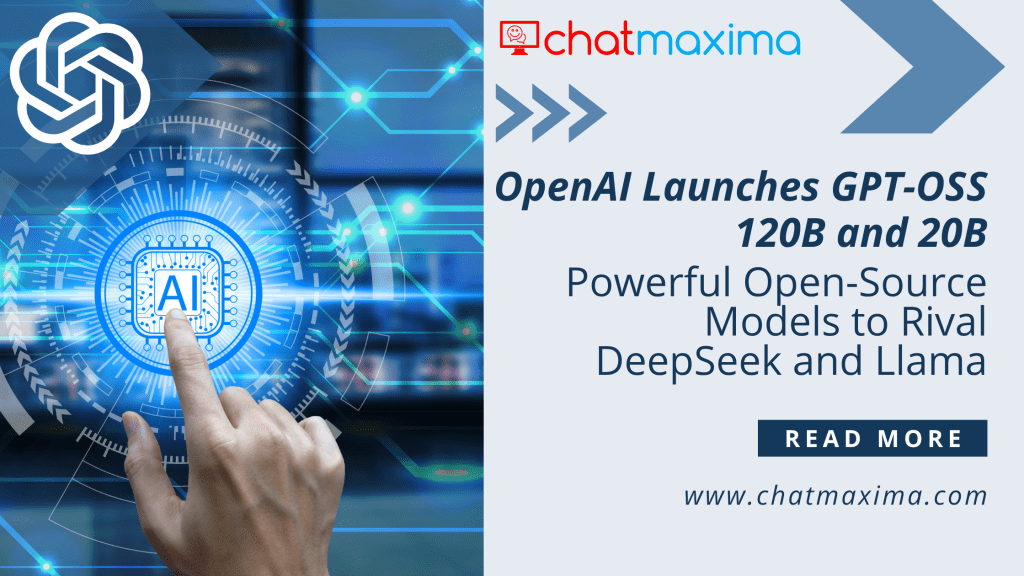After a six-year break from releasing open-source AI models, OpenAI is back in the game with the launch of two new open-weight models: gpt-oss-120b and gpt-oss-20b. These models, designed to rival top open-source alternatives while bringing OpenAI’s engineering rigor into the public domain, reflect a pivotal change in both OpenAI’s strategy and the broader AI landscape.
Two Powerful Models, One Open Vision
The newly released models come in two sizes:
- gpt-oss-120b: A more capable model that runs on a single Nvidia GPU.
- gpt-oss-20b: A lightweight version optimized for laptops with 16GB RAM.
Both are freely available via Hugging Face under the permissive Apache 2.0 license, allowing developers and enterprises to build on, deploy, and even monetize the models without restrictions. This move marks the first truly open model release by OpenAI since GPT-2 in 2019.
Why Now? Timing and Motivation Behind GPT-OSS
The decision to go open wasn’t made in a vacuum. Several industry and political factors converged to push OpenAI back toward its founding ideals:
- Global Competition: Chinese labs like DeepSeek, Alibaba’s Qwen, and Moonshot AI have released state-of-the-art open models, gaining rapid global traction. Meta’s Llama models, once dominant, are also facing similar competition.
- US Policy Pressure: The Trump administration urged American AI firms to open source more technology to ensure AI remains aligned with democratic values.
- Developer Demand: Businesses and developers increasingly prefer running models locally for cost, privacy, and control. Many were already using open-source models alongside OpenAI’s proprietary services.
- Philosophical Realignment: CEO Sam Altman has publicly acknowledged that OpenAI had been “on the wrong side of history” by keeping its models closed.
Performance and Capabilities
While gpt-oss doesn’t outperform OpenAI’s most advanced o-series models (like o3 and o4-mini), it beats many leading open models across critical benchmarks:
- Codeforces (with tools):
- gpt-oss-120b: 2622
- gpt-oss-20b: 2516
- Outperforms DeepSeek’s R1 but not OpenAI’s proprietary models
- Humanity’s Last Exam:
- gpt-oss-120b: 19%
- gpt-oss-20b: 17.3%
- Higher than DeepSeek and Qwen
However, these models do hallucinate more than o3 and o4-mini:
- On PersonQA:
- gpt-oss-120b: 49%
- gpt-oss-20b: 53%
- Compared to o4-mini at 36% and o1 at just 16%
This tradeoff is expected due to their smaller size and limited world knowledge compared to frontier models.
Built for Tool Use and Agentic Workflows
OpenAI trained these models using similar methods as its proprietary stack:
- Mixture-of-Experts (MoE): Only 5.1 billion parameters are activated per token (for gpt-oss-120b), improving efficiency.
- Reinforcement Learning (RL): High-compute RL post-training ensures better decision-making, especially in tool use.
GPT-OSS is optimized for text-based tasks and excels in powering AI agents that can call tools (e.g., web search, Python execution). However, it does not support image or audio generation.
Balancing Openness with Safety
While the models are open-weight, OpenAI did not release the training data. This decision reflects ongoing legal scrutiny over data sourcing in AI, as several lawsuits claim companies used copyrighted materials without consent.
Safety was also a major concern. OpenAI delayed the launch to ensure the models couldn’t be fine-tuned for harmful purposes, including cyberattacks or bio-weapon creation. Internal and external evaluations showed gpt-oss models did not cross critical danger thresholds.
Strategic Shift, Competitive Play
OpenAI’s move to open-source is as much about ecosystem control as it is about altruism. The company wants to:
- Stay relevant in a fast-moving, open-source-dominated ecosystem.
- Encourage developers to build on OpenAI infrastructure rather than rival platforms.
- Restore its mission to build AI that benefits all of humanity, not just enterprise customers.
What’s Next?
The release of gpt-oss marks a new era for OpenAI and sets the stage for more open competition. But the game isn’t over:
- DeepSeek R2 is on the horizon.
- Meta is gearing up for new releases from its superintelligence lab.
As AI becomes more commoditized and globally democratized, OpenAI’s pivot to openness may prove essential-not just for its relevance, but for the future of AI development as a whole.
Final Thoughts
GPT-OSS represents a critical recalibration in OpenAI’s trajectory. It’s a return to roots, a nod to community values, and a calculated response to mounting pressure from global competitors and policy makers. While the models aren’t perfect, they offer a powerful foundation for the future-one that developers, researchers, and enterprises alike can build upon freely.
The open-source AI race just got a lot more interesting.

Pingback: Breakthrough AI Models Released by Leading Labs: Genie 3, Claude 4.1 Opus, GPT-OSS, and More - ChatMaxima Blog